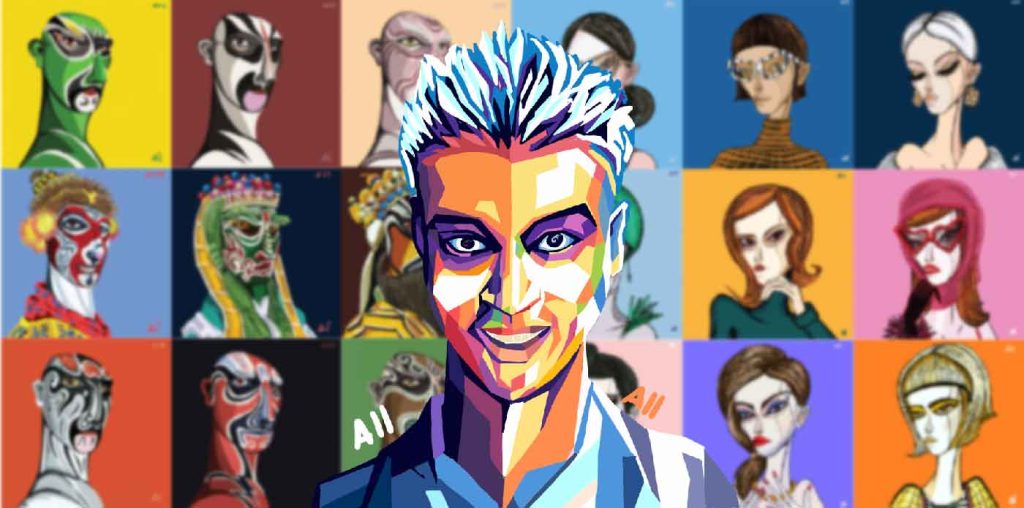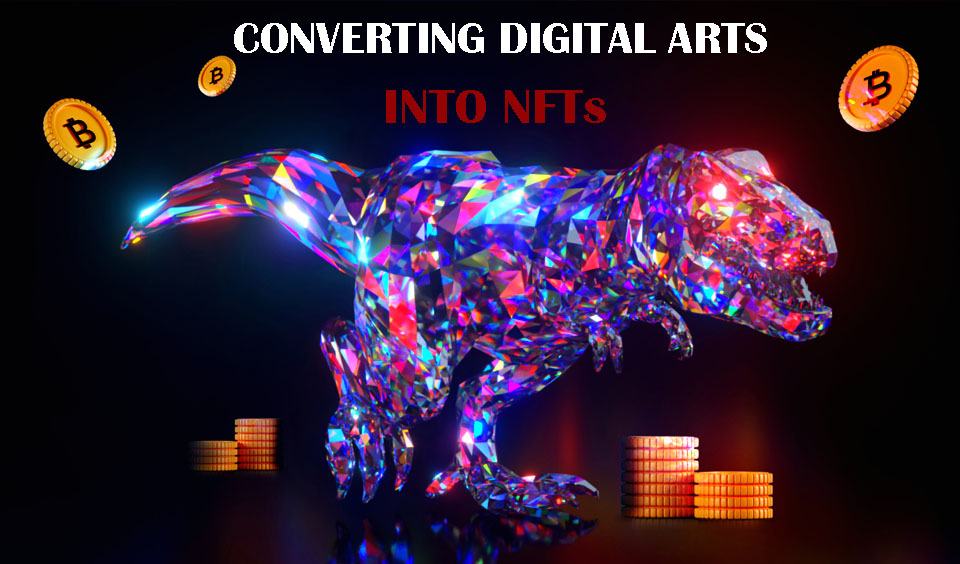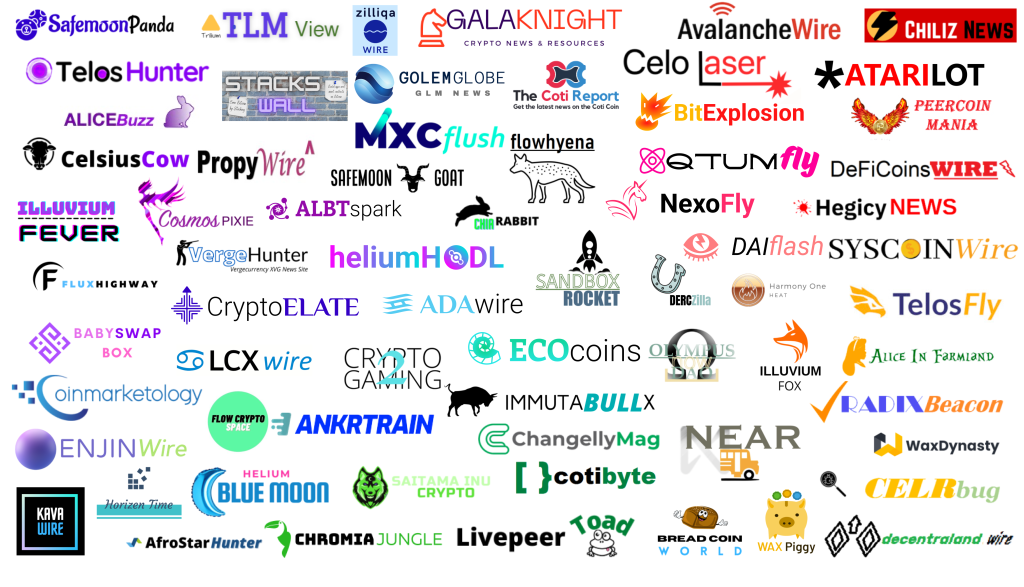With creative skills and a personal computer, you can convert your digital art into NFTs.
What is an NFT?
NFTs are nonfungible tokens. The adjective “nonfungible” is often used in economics to represent features such as uniqueness and non-interchangeability. In crypto, nonfungibility indicates that one item cannot be exchanged for another.
A “token” as a unit of account is a certificate of validity stored on the decentralized blockchain, making digital assets traceable and accessible to everyone. As a result, NFTs are a one-of-a-kind virtual currency that can fall into pretty much any category and usually take the shape of paintings, videos, music, collectible items in video games, or any other type of creative digital production.
Since NFTs boomed in early 2021, everyone is now buying and selling these tokens worldwide. But how can someone convert real art into NFTs, and how can they sell them? Is it hard? Is coding necessary to make an NFT?
In a nutshell, the steps are pretty simple. To understand the primary procedure and its specifics, read this guide below.

What is crypto art?
Art is the most common use case for NFTs, and it is no wonder that crypto art in NFT form has recently exploded in popularity. The novel blockchain technology creates conditions allowing artists to earn tens of millions of dollars from their digital paintings, attracting many creative people who could only dream about such a level of ease and accessibility.
Sensational high-profile auctions of NFTs linked to digital art have received considerable public attention. The most expensive sales hit the headlines as they fetched millions. In 2022, the most costly NFT with a price of $91.8 million was “Merge” by pseudonymous digital artist Pak.
In 2021, Everyday: the First 5000 Days NFT collection by artist Mike Winkelmann, known as Beeple, was another expensive auction sold for $69.3 million.
Crypto art is associated with unique art pieces created by well-known artists and sold on auction marketplaces that include not only popular NFT platforms but also traditional auction houses like Sotheby’s and Christie’s. Still, most art in the crypto space is created by unknown talented beginners.
This type of art is usually created with the help of various autonomous systems. However, some NFT collections, including the pioneer CryptoPunks or the most excited recently called Bored Ape Yacht Club, are examples of generative art. The images in these popular collections are created by assembling a selection of simple picture components in different combinations.
How to turn your art into an NFT?
If you already wonder if you should convert your art into an NFT, the answer is obviously, “yes, why not try.” The process of creating an NFT is neither complex, costly, nor technical. All it requires is a set of creative skills and a personal computer.
Again, it is worth noting that NFTs can potentially convert images, songs, videos, GIFs, and other digital items. So, you must first choose an appropriate art field that suits you best. Depending on this, you will understand what skills you need to become an actual NFT creator.
For example, a graphic artist must use visual editing tools like Adobe Illustrator, Adobe Photoshop, MS Paint, CorelDraw, and the like. You can also try alternative ways, such as three-dimensional (3D) modeling, which is known to be more difficult for beginners. If you choose 3D animation, you will be expected to use 3D modeling tools such as Blender or Cinema 4D to design animated graphics and characters that will then be converted into NFTs.
After that, you will need to develop a unique idea for your single artwork or maybe an entire collection and think about the content into which it will eventually turn.
Is coding necessary for NFTs?
It is pretty easy to create an NFT from digital art without coding. NFTs are minted once created, similar to how metal coins are created and added into circulation. The process of making them is called minting. It is the act of publishing a unique instance of the token on the blockchain.
After this procedure, the particular piece of digital art becomes secure, tamper-proof, and hard to manipulate. Since this digital item became an NFT, it can now be bought, sold, and digitally tracked when it is resold or recollected.
For artists, minting NFTs into digital art is a novel way to monetize their work fairly. If the demand for the artwork increases and becomes famous and raises in value, the artists can benefit from it. On most NFT marketplaces, artists can program a royalty clause upon minting so that secondary sales of their works will generate passive income.
Minting is an automated process provided on most NFT marketplaces. To start it, you will need to take a few simple steps mentioned below:
Still, you can try to code an NFT if you are already experienced in this sphere and want to become an NFT developer. To dive deeply into NFT programming, you need to consider that the Ethereum network still has a monopoly on developing NFTs.
The standard coding language used for NFT development is Solidity, designed for developing smart contracts that run on the Ethereum blockchain. Others are Javascript and HTML/CSS. Additionally, the InterPlanetary File System is usually used to store artists’ NFTs.

Choosing the NFT marketplace to make and sell your NFTs
An essential part of minting NFTs is choosing a good NFT platform. The right choice depends on various factors like supported file format, crypto wallet matching, accessibility to the platform for users, and a price to mint an NFT, or a transaction fee, which is a payment made to compensate for the computing energy required to process and validate transactions.
There are a bunch of various online NFT marketplaces in the crypto space, and each of them operates slightly differently. The crucial thing for artists is knowing whether the platform is curated or if it is self-service based and choosing the one which is the most suitable, visited, and user-friendly for them.
Self-service-based or non-curated NFT platforms provide free access to all artists. The most popular are such mass self-service NFT marketplaces as OpenSea and Raible. To upload NFTs onto them, you only need to register via a crypto wallet and pay the transaction fee to mint an NFT.
Curated NFT platforms are more selective about artists. To register and start minting your art on these platforms, you must apply all the details about the NFT collection and your previous artistic experience.
Well-known curated platforms are SuperRare and Nifty Gateway, to name a few. Due to this stringent selection criteria, however, primarily top digital artworks are exhibited on such platforms, so buyers have more confidence in artists collaborating with these platforms. Another disadvantage of curated NFT marketplaces is the long waiting period for the experts’ decision.
Setting up a cryptocurrency wallet
A cryptocurrency wallet is a tool you will need to access NFT platforms, sign transactions and manage your balances.
Before setting it up, the most important thing is to ensure that the wallet matches the cryptocurrency used on the NFT platform you intend to use.
Since most NFT marketplaces are Ethereum-based, they accept Ethereum’s native cryptocurrency, Ether (ETH), as a payment. Therefore, it is necessary to have a crypto wallet with some ETH handy.
There are plenty of crypto wallets with already millions of users. Many have various functions, and some have mobile applications and browser extensions to access blockchain-based platforms easily.
Choosing a suitable cryptocurrency wallet depends on what kind of safety you are willing to have. The main types of them include custodial, noncustodial, and hardware wallets. A custodial wallet is also a hosted wallet since users’ funds are automatically stored by a third party, similar to how banks keep the money in checking and savings accounts.
It is considered to be the most user-friendly and easy to set up. A noncustodial wallet gives users complete control of the security of their crypto and does not rely on a third party to keep funds safe. A hardware wallet, also known as a cold wallet, is a physical device that can keep users’ crypto offline and secure it even in the worst-case scenario when someone’s computer is hacked.

How to sell digital art as NFTs
NFT sale is likely to be the endpoint of your NFT minting. Most NFT platforms have a feature to choose a selling method or an option to set a price for your NFT while minting it.
Fixed price sale and auction are the main two ways to sell NFTs. A fixed-price sale is considered to be the easiest way, as well as pretty transparent and direct. To sell your freshly minted NFT this way, you will only need to specify the price you want to sell it. Some platforms also ask to set a royalty percentage, the amount you will receive in case of future sales of your art, so pay attention to that, too.
Another way to sell your NFT is through an auction so that buyers can browse and bid on your digital art. There are usually two types of them. Some auctions may be online-only, while others may end in a full-fledged live auction.
The first type is an English auction, an increasing price auction where the highest bid wins. A timed auction is a specific form of English auction when an NFT can be bid over a defined period, and at the end, the collector who has submitted the highest bid has won. The second type is a Dutch auction, a decreasing-price auction in which the price drops until someone buys your NFT.
It is up to you which way of selling NFT to choose. Each method has its pros and cons, whether it is a possible lack of understanding of the actual value of your artwork when setting up a fixed price or dependence on time during sales through auctions.
As the Crypto industry has evolved and gained more mainstream attention, winning attention and trust is essential.
Do you have a Crypto, DeFi, or NFT project you’d like more people to know about?
Get Published On 75+ Exclusive Google News Approved Crypto Sites For An Overnight Boost In Rankings, Reputation & Traffic.
To do that, you must publish and get that content seen on trusted, authoritative sites specializing in the crypto industry.
Producing and publishing content is the critical difference between projects that thrive and grow and projects that fade into obscurity as investors lose faith, trust, and sell.
Choose to get your project or service the publicity it needs to be seen, noticed, and attract more attention, trust, investment, or sales.
So How Do You Get Publicity In Such A Busy Industry?
The fastest way is to have interesting, newsworthy content written about your project and published on industry-focused news sites.
Sites like:

Each site in our network is independently owned by trusted authorities and approved in Google News.
Google Trusts These Sites So Much Their Content Gets Preferred Treatment
Google will give content published on these sites more exposure than less trusted websites.
With our service, you can get more significant publicity in just a few hours.
We’ll identify the highest impact opportunities for your project to make sure you get seen, get heard, win the trust and make sure your project gets the recognition it deserves.
To Find Out How It Works?
Click the Link
https://ampifire.com/loci-distribution?i=l0e
Source
https://cointelegraph.com/news/how-to-convert-your-digital-art-into-nfts-and-sell-it
Disclaimer
Although the material contained in this website was prepared based on information from public and private sources that ampraider.com believes to be reliable, no representation, warranty, or undertaking, stated or implied, is given as to the accuracy of the information contained herein, and ampraider.com expressly disclaims any liability for the accuracy and completeness of the information contained in this website.

